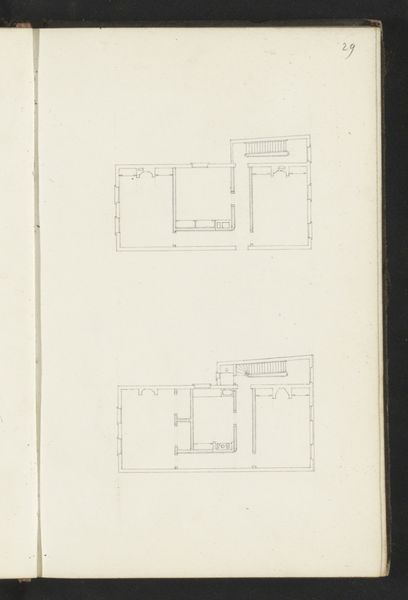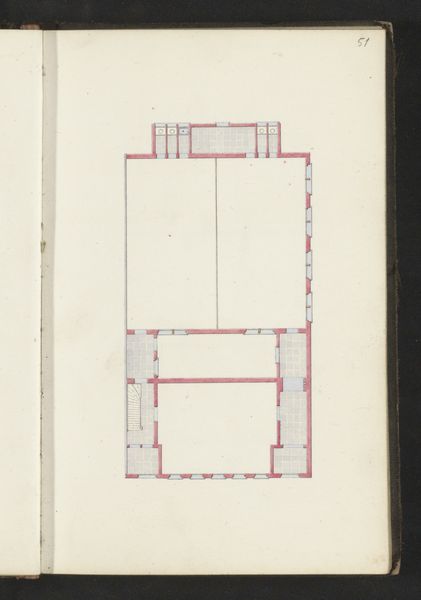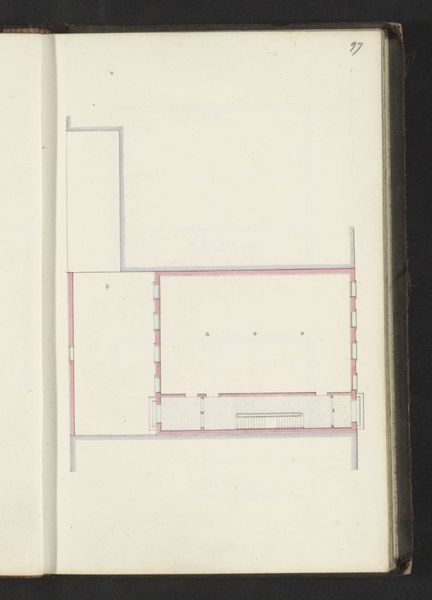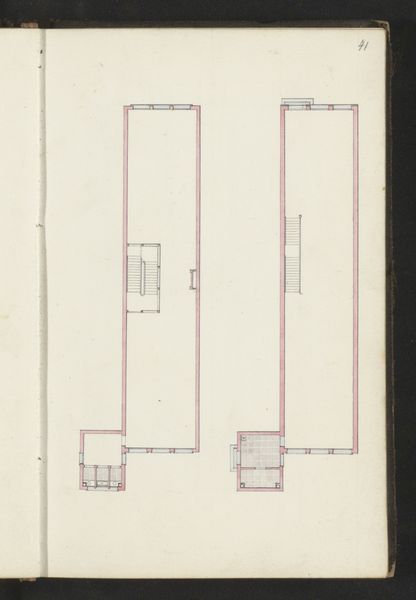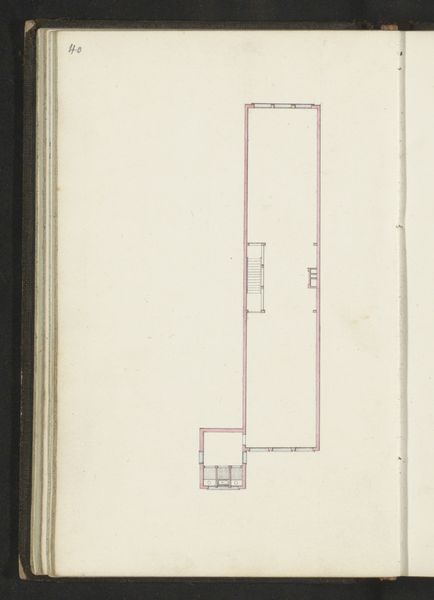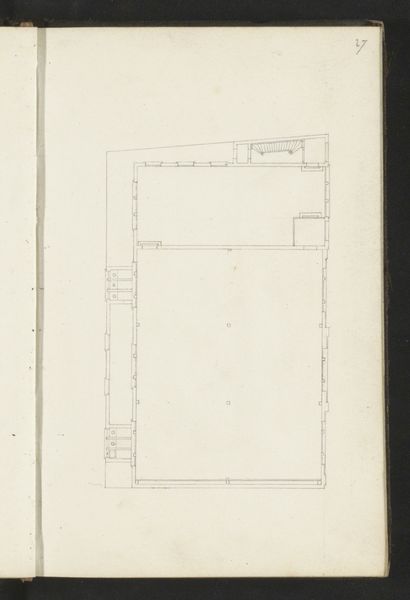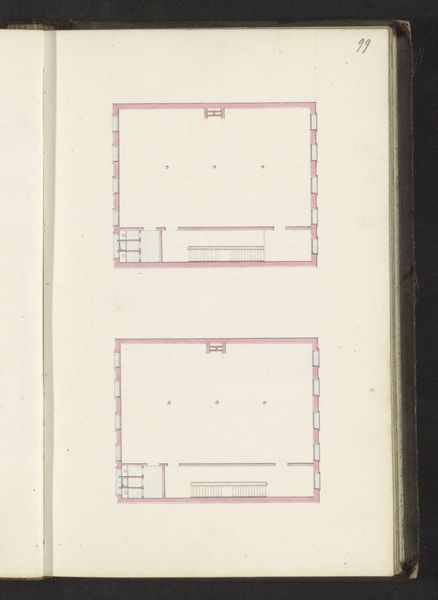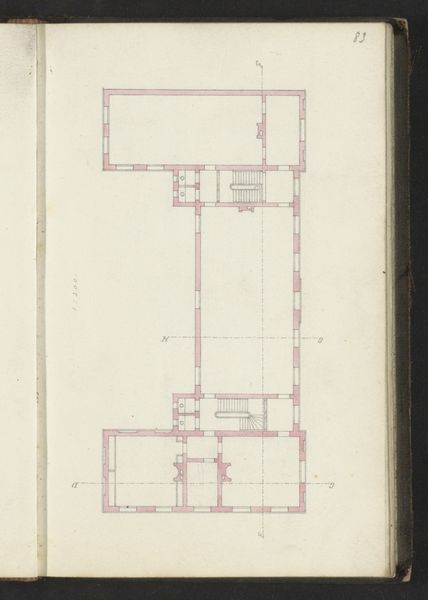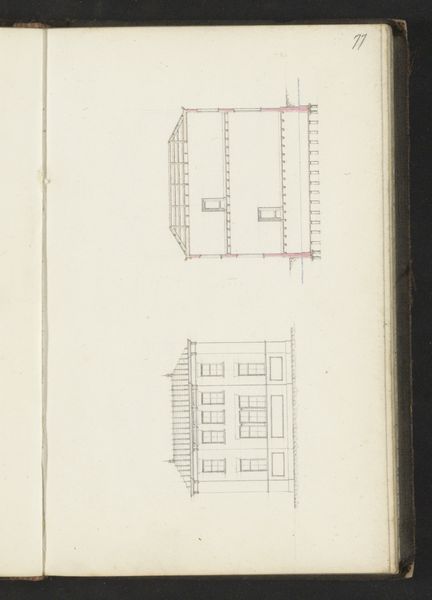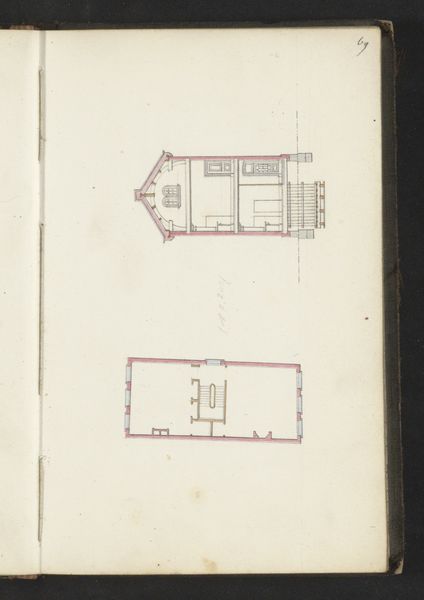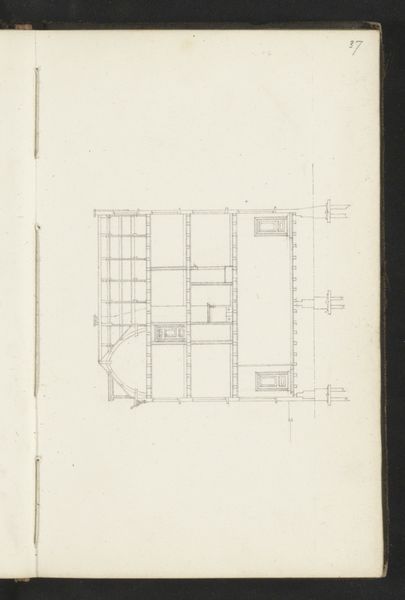
drawing, paper, pen, architecture
#
drawing
#
aged paper
#
homemade paper
#
script typography
#
sketch book
#
hand drawn type
#
paper
#
personal sketchbook
#
hand-drawn typeface
#
geometric
#
sketchbook drawing
#
pen
#
cityscape
#
sketchbook art
#
design on paper
#
architecture
Copyright: Rijks Museum: Open Domain
Editor: So, here we have Willem Springer Jr.’s "Plattegronden van twee verdiepingen" from around 1864. It's a pen and ink drawing on paper, two architectural plans side-by-side. The line work is meticulous. What strikes me is how humble and functional it is. What are your initial thoughts on this work? Curator: Well, considering this drawing is executed in pen on paper, and is found within a sketchbook, I think we must consider the labour that produced it, alongside its inherent materiality. This isn't some grand oil painting; it’s a practical design. Imagine the drafter’s repetitive motions and their working conditions – were they pressured, underpaid, using high quality paper, working under commission...? These plans represent labour conditions that built much of 19th century cities. Editor: That's fascinating! It reframes the drawing not just as design, but documentation of a working process. Do you think the quality of the paper or the precision of the lines tell us anything about the status of architectural drawing at the time? Was it considered "art" or purely utilitarian? Curator: Precisely. And think about the materials themselves – where did the paper come from? What kind of pen was used? The red outlining the plans – where did those dyes come from? Considering the industrialization happening then, are the paper and inks mass-produced or handcrafted? Even the geometric shapes weren’t new to paper – look at contemporary maps and printed diagrams for an expanded context! Such analysis forces us to re-evaluate assumptions about the relationship between "high art" and craft production. Editor: That totally shifts my understanding! I was stuck on the aesthetics but looking at the material production gives so much more insight to the historical conditions in which it was made. Curator: Absolutely. Thinking through the production expands our appreciation beyond just visual analysis. We get to see this design as the confluence of multiple layers of material history, technical skill and market forces, shaping architectural production. Editor: So, by investigating materials and methods we discover the true value and socio-economical influences embedded into this architectural plan. Curator: Exactly! Examining the means of production of art often reveals hidden aspects about culture and class. It highlights labour, technology, and exchange networks, moving focus from the purely aesthetic realm of "Plattegronden van twee verdiepingen" into social awareness and material honesty.
Comments
No comments
Be the first to comment and join the conversation on the ultimate creative platform.
